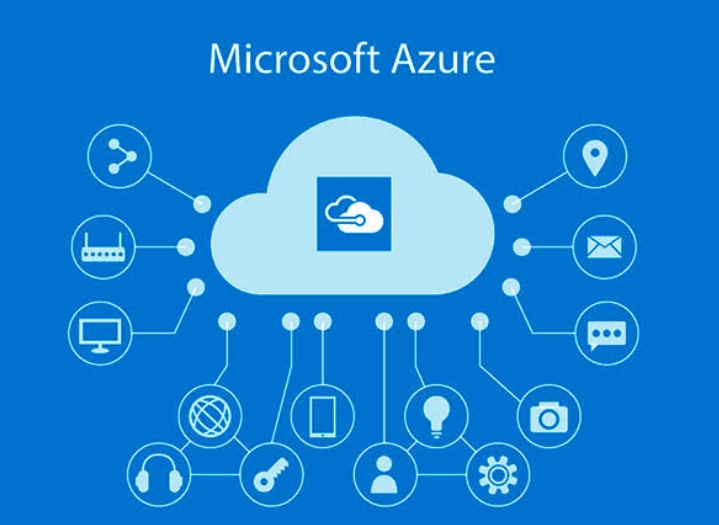Let's Talk Cloud: Implementing and Managing Storage in Azure
 Samuel Happiness
Samuel Happiness
Hey cloud explorers! Welcome back to our "Let's Talk Cloud" series. Today we're diving into something that every single application needs - storage! Whether you're running a simple website or a complex enterprise application, you're going to need somewhere to keep your data, and Azure has you covered with a variety of storage options.
Azure Storage: More Than Just a Place to Keep Your Stuff
When most people think of storage, they imagine a digital version of their basement - somewhere to dump files and forget about them. But Azure Storage is so much more sophisticated than that! It's a suite of services designed to meet nearly every data storage scenario you might encounter.
The Core Storage Services
Let's break down the main storage services you'll want to get familiar with:
Blob Storage: Your Unstructured Data Superhero
Azure Blob Storage is perfect for storing massive amounts of unstructured data - think photos, videos, backups, log files, and documents. It's incredibly scalable (we're talking petabytes of data here!) and surprisingly affordable.
What makes Blob Storage special is its tiering system. You can automatically move data between:
- Hot tier: For data you access frequently
- Cool tier: For data you access less frequently (cheaper storage, slightly higher access costs)
- Archive tier: For data you rarely access but need to keep (super cheap storage, higher retrieval costs and time)
This means you're not paying premium prices for data that's just sitting around!
File Storage: Your Network Share in the Cloud
Remember those network drives at work where everyone shared documents? Azure File Storage brings that familiar experience to the cloud. You can mount these file shares directly on your Windows, macOS, or Linux machines just like any other network drive.
This is perfect for migrating legacy applications that expect a file system without rewriting them, or for creating shared document repositories that work across platforms.
Table Storage: Structured NoSQL Data
Need to store structured data without the rigid schema of a traditional database? Azure Table Storage offers a NoSQL approach for storing key-attribute data sets. It's perfect for storing user profiles, device information, or other metadata, and it scales beautifully.
Queue Storage: Message Passing Made Easy
Queue Storage isn't about storing files but rather messages that pass between application components. It's essential for building decoupled applications where different services need to communicate asynchronously.
Disk Storage: Virtual Hard Drives for Your VMs
Last but not least, Azure Disk Storage provides virtual hard drives for your virtual machines. These come in different performance tiers from standard HDDs to ultra-high-performance SSDs, letting you match the disk performance to your workload needs.
Security and Access Management
One thing I love about Azure Storage is how seriously it takes security. You get multiple options to secure your data:
- Encryption: All data is automatically encrypted at rest
- Shared Access Signatures (SAS): Generate temporary access tokens with specific permissions
- Azure Active Directory integration: Use your existing identity system for access control
- Network restrictions: Limit access to specific IP addresses or virtual networks
- Private Endpoints: Connect to your storage account over a private link, bypassing the public internet entirely
Data Redundancy: Keeping Your Data Safe
Nobody wants to lose data, which is why Azure Storage offers multiple redundancy options:
- Locally redundant (LRS): Three copies in a single datacenter
- Zone redundant (ZRS): Copies spread across multiple datacenters in a region
- Geo-redundant (GRS): Copies in a primary region and a secondary region hundreds of miles away
- Read-access geo-redundant (RA-GRS): Same as GRS, but with read access to the secondary copy
Performance Optimization Tips
Looking to squeeze every bit of performance out of your storage? Here are a few pro tips:
- Use CDN for frequently accessed blob content
- Choose the right access tier for your usage patterns
- Take advantage of premium storage for I/O-intensive workloads
- Use blob index tags to quickly find specific blobs without scanning entire containers
- Implement proper partitioning strategies for Table Storage
Cost Management
Storage costs can add up quickly if you're not careful. Here's how to keep them in check:
- Regularly review and clean up unused data
- Set up lifecycle management policies to automatically move or delete data
- Use the right redundancy option for different types of data (not everything needs geo-redundancy!)
- Monitor usage with Azure Monitor and set up alerts for unexpected spikes
Coming Up Next
In our next post, we'll take a deep dive into practical examples of setting up and configuring Azure Storage accounts. We'll walk through:
- Creating and configuring storage accounts
- Setting up blob containers with appropriate access levels
- Implementing security best practices
- Monitoring and troubleshooting common issues
Have you started using Azure Storage in your environment? What's been your experience so far? Drop a comment below with your questions or favorite storage tips!
Until next time, store smartly and prosper in the cloud!
Subscribe to my newsletter
Read articles from Samuel Happiness directly inside your inbox. Subscribe to the newsletter, and don't miss out.
Written by

Samuel Happiness
Samuel Happiness
I'm a passionate and innovative software developer, I thrive on crafting elegant solutions that drive real-world impact. With a strong foundation in hands-on experience in mobile and web development, I am adept at turning complex problems into user-friendly applications.